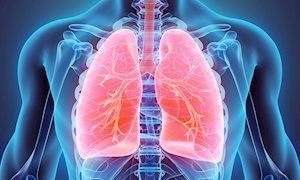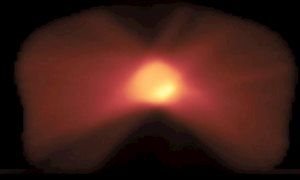10 July 2018
Purpose To study interreader variability for classifying pulmonary opacities at CT as perifissural nodules (PFNs) and determine how reliably radiologists differentiate PFNs from malignancies. Materials and Methods CT studies were obtained retrospectively from the National Lung Screening Trial (2002-2009). Nodules were eligible for the study if they were noncalcified, solid, within the size range of 5 to 10 mm, and scanned with a section thickness of 2 mm or less. Six radiologists classified 359 nodules in a cancer-enriched data set as PFN, non-PFN, or not applicable. Nodules classified as not applicable by at least three radiologists were excluded, leaving 316 nodules for post-hoc statistical analysis. Results The study group contained 22.2% cancers (70 of 316). The median proportion of nodules classified as PFNs was 45.6% (144 of 316). All six radiologists uniformly classified 17.7% (56 of 316) of the nodules as PFNs. The Fleiss κ was 0.50. Compared with non-PFNs, nodules classified as PFNs were smaller and more often located in the lower lobes and attached to a fissure (P < .001). Thirteen (18.6%) of 70 cancers were misclassified 21 times as PFNs. Individual readers' misclassification rates ranged from 0% (0 of 125) to 4.9% (eight of 163). Of 13 misclassified malignancies, 11 were in the upper lobes and two were attached to a fissure. Conclusion There was moderate interreader agreement when classifying nodules as perifissural nodules. Less than 2.5% of perifissural nodule classifications were misclassified lung cancers (21 of 865) in this cancer-enriched study. Allowing nodules classified as perifissural nodules to be omitted from additional follow-up in a screening setting could substantially reduce the number of unnecessary scans; excluding perifissural nodules in the upper lobes would greatly decrease the misclassification rate.
Publication
Classification of CT Pulmonary Opacities as Perifissural Nodules: Reader Variability.
Schreuder A, van Ginneken B, Scholten ET, Jacobs C, Prokop M, Sverzellati N, Desai SR, Devaraj A, Schaefer-Prokop CM.
Anton Schreuder, Bram van Ginneken, Ernst Scholten, Colin Jacobs and Cornelia Schaefer-Prokop are members of theme Rare Cancers. Mathias Prokop is member of theme Vascular damage.
 In Radiology Anton Schreuder et al. showed that experienced radiologists do not agree with each other when classifying nodules on CT as benign perifissural nodules, and that it is unlikely but not impossible that a nodule classified as a perifissural nodule turns out to be a malignant.
In Radiology Anton Schreuder et al. showed that experienced radiologists do not agree with each other when classifying nodules on CT as benign perifissural nodules, and that it is unlikely but not impossible that a nodule classified as a perifissural nodule turns out to be a malignant.
Purpose To study interreader variability for classifying pulmonary opacities at CT as perifissural nodules (PFNs) and determine how reliably radiologists differentiate PFNs from malignancies. Materials and Methods CT studies were obtained retrospectively from the National Lung Screening Trial (2002-2009). Nodules were eligible for the study if they were noncalcified, solid, within the size range of 5 to 10 mm, and scanned with a section thickness of 2 mm or less. Six radiologists classified 359 nodules in a cancer-enriched data set as PFN, non-PFN, or not applicable. Nodules classified as not applicable by at least three radiologists were excluded, leaving 316 nodules for post-hoc statistical analysis. Results The study group contained 22.2% cancers (70 of 316). The median proportion of nodules classified as PFNs was 45.6% (144 of 316). All six radiologists uniformly classified 17.7% (56 of 316) of the nodules as PFNs. The Fleiss κ was 0.50. Compared with non-PFNs, nodules classified as PFNs were smaller and more often located in the lower lobes and attached to a fissure (P < .001). Thirteen (18.6%) of 70 cancers were misclassified 21 times as PFNs. Individual readers' misclassification rates ranged from 0% (0 of 125) to 4.9% (eight of 163). Of 13 misclassified malignancies, 11 were in the upper lobes and two were attached to a fissure. Conclusion There was moderate interreader agreement when classifying nodules as perifissural nodules. Less than 2.5% of perifissural nodule classifications were misclassified lung cancers (21 of 865) in this cancer-enriched study. Allowing nodules classified as perifissural nodules to be omitted from additional follow-up in a screening setting could substantially reduce the number of unnecessary scans; excluding perifissural nodules in the upper lobes would greatly decrease the misclassification rate.
Publication
Classification of CT Pulmonary Opacities as Perifissural Nodules: Reader Variability.
Schreuder A, van Ginneken B, Scholten ET, Jacobs C, Prokop M, Sverzellati N, Desai SR, Devaraj A, Schaefer-Prokop CM.
Anton Schreuder, Bram van Ginneken, Ernst Scholten, Colin Jacobs and Cornelia Schaefer-Prokop are members of theme Rare Cancers. Mathias Prokop is member of theme Vascular damage.
Related news items

Thomas van den Heuvel wins Stairway to Impact Award for safer pregnancies using AI Award for safer pregnancies using AI
1 December 2021Radboudumc researcher Thomas van den Heuvel receives the Stairway to Impact Award from Dutch Research Council NWO. He receives this prize for the development of the BabyChecker, a smartphone application that allows midwives to make ultrasounds during pregnancies.
go to page
KWF grant for better selection of individuals and lung nodules in lung cancer screening
1 November 2021 The Dutch Cancer Society has awarded the consortium project ‘Multi-source data approach for Personalized Outcome Prediction in lung cancer screening’ with a grant of 1,425,000 Euro. Colin Jacobs will lead the work package on using artificial intelligence for accurate risk estimation of lung nodules. go to page
Image recognition for population-based lung cancer screening An interview with Bram van Ginneken
26 April 2021 Being able to automatically recognize lung tumors on CT scans: professor of functional image analysis Bram van Ginneken developed software within his Vici project that is now used worldwide. The resulting cost savings bring the introduction of a population-based lung cancer screening closer. go to page
Radiation boost lowers risk of prostate cancer recurrence
21 January 2021 An additional external-beam radiation dose delivered directly to the tumor can benefit the prospects of men with non-metastatic prostate cancer, without causing additional side effects. The risk of relapse within five years for these men is smaller than for men who did not receive this boost. go to page
Evaluation of an AI system for detection of COVID-19 on Chest X-Ray images
22 May 2020 In the journal Radiology researchers from Radboudumc, Bernhoven Hospital and Jeroen Bosch Hospital described how an artificial intelligence system (CAD4COVID-XRay) can identify characteristics of COVID-19 on chest x-rays with performance comparable to six independent radiologists. go to page
